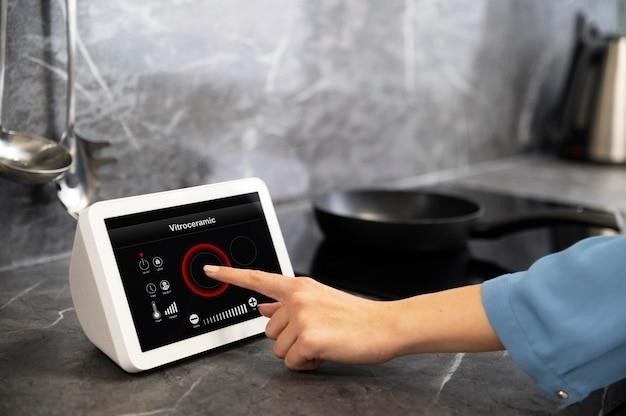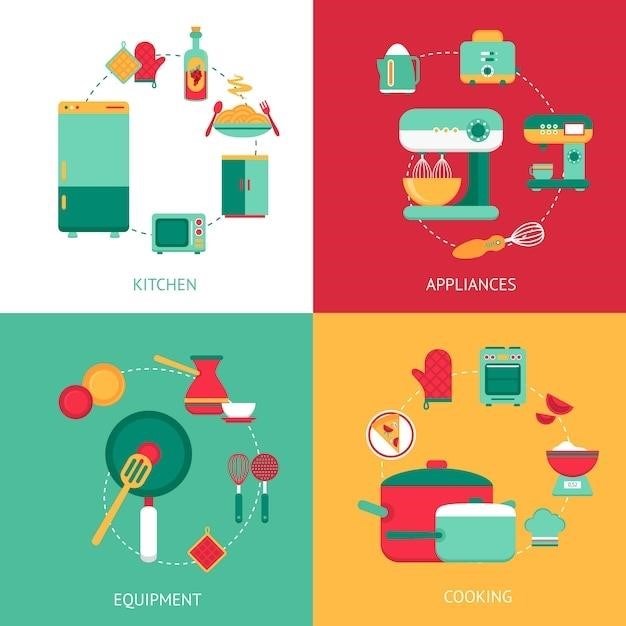Auto to Manual Conversion⁚ A 240SX Guide
This comprehensive guide details converting your Nissan 240SX from automatic to manual transmission․ It covers necessary parts‚ cost estimates‚ finding a suitable manual transmission‚ and crucial wiring and ECU adjustments․ Detailed steps ensure a successful conversion․
Necessary Parts and Components
A successful 240SX auto-to-manual conversion requires a comprehensive parts list․ Beyond the manual transmission itself (KA24E or SR20DET compatible)‚ you’ll need a clutch assembly (pressure plate‚ disc‚ throw-out bearing)‚ a flywheel appropriate for your engine and transmission‚ and a pilot bushing․ A new clutch line‚ potentially a stainless steel upgrade‚ is essential‚ along with a pedal assembly (clutch‚ brake‚ and possibly accelerator) to accommodate the manual setup․ Don’t forget the necessary hardware⁚ bellhousing bolts‚ flywheel bolts‚ and transmission mount bolts․ A manual transmission ECU is highly recommended for optimal performance and proper functionality‚ though some conversions utilize the automatic ECU with modifications․ Consider acquiring a new driveshaft‚ as the length often differs significantly between automatic and manual configurations․ Lastly‚ ensure you have the appropriate transmission fluid for your newly installed manual gearbox; GL-4 rated is crucial to avoid damaging synchros․
Cost Estimation and Budget Planning
The cost of a 240SX auto-to-manual conversion is highly variable‚ depending on your approach and resources․ A budget-conscious approach using used parts sourced from junkyards or online marketplaces can keep costs around $400-$500‚ primarily covering parts and essential fluids․ This assumes you possess the mechanical skills and tools to perform the conversion yourself․ However‚ this route demands significant time investment and carries a higher risk of encountering unforeseen issues․ Opting for new or professionally refurbished parts will significantly increase the cost‚ potentially reaching $1000 or more․ Factor in additional expenses like specialized tools (transmission jack‚ clutch alignment tool) that may be needed․ If you lack the mechanical expertise‚ engaging a professional mechanic will add substantially to the overall expense‚ potentially ranging from $2000 to $4000 or more‚ depending on labor rates and regional location․ Thoroughly research part prices and labor costs in your area before starting the project‚ ensuring your budget adequately covers all potential expenses and unforeseen complications․
Finding a Suitable Manual Transmission
Selecting the correct manual transmission is critical for a successful 240SX conversion․ The most straightforward approach involves sourcing a transmission from another 240SX equipped with a manual transmission․ This ensures compatibility with the vehicle’s existing drivetrain components‚ simplifying installation․ When selecting a used transmission‚ prioritize units with verifiable low mileage and a documented history of reliable performance․ Inspect the transmission carefully for any signs of damage or wear․ Look for leaks‚ dents‚ or other indications of previous problems․ If purchasing from a junkyard or private seller‚ obtain as much information as possible about the transmission’s history and condition․ Alternatively‚ consider purchasing a new or remanufactured transmission․ While significantly more expensive‚ this option offers greater assurance of quality and reliability․ Remember‚ compatibility between the transmission and the engine is essential․ Incorrect pairing can lead to performance issues or even damage to the drivetrain․ Consult online forums and resources dedicated to Nissan 240SX modifications for guidance on choosing the appropriate transmission for your specific model and year․
Wiring and ECU Considerations
The electrical system requires careful attention during a 240SX auto-to-manual conversion․ The automatic transmission’s wiring harness must be removed‚ and a manual transmission harness installed․ This often involves splicing wires and potentially modifying the existing wiring to accommodate the new transmission’s sensors and actuators․ A crucial aspect is the Engine Control Unit (ECU)․ While some conversions might allow using the existing automatic ECU‚ optimal performance often requires a manual transmission ECU‚ as it’s tuned for manual shifting and will likely provide a more accurate fuel and ignition mapping․ The differences in the ECU programming between automatic and manual configurations can affect various aspects of the car’s operation‚ including throttle response and fuel efficiency․ Improper wiring can lead to various issues including starting problems‚ incorrect shift operation‚ and even damage to the engine or transmission․ Consult detailed wiring diagrams specific to your 240SX model year․ Online forums dedicated to Nissan 240SX conversions provide valuable information and advice from experienced enthusiasts․ Remember‚ safety is paramount․ If you lack experience with automotive electrical systems‚ it’s advisable to seek professional assistance for this critical stage of the conversion․
Clutch System Installation
Installing the clutch system is a critical step in the 240SX manual transmission conversion․ This involves several components working in concert⁚ the clutch disc‚ pressure plate‚ throw-out bearing‚ and flywheel․ Begin by installing the new flywheel‚ ensuring it’s properly aligned and torqued to the engine’s crankshaft․ Next‚ position the clutch disc onto the flywheel splines‚ taking care to align it correctly․ The pressure plate is then bolted onto the flywheel over the clutch disc‚ again paying close attention to torque specifications․ The throw-out bearing‚ crucial for disengaging the clutch‚ needs precise placement within the clutch fork mechanism․ Bleed the clutch hydraulic system thoroughly to remove any air bubbles that might impede clutch operation․ This usually involves opening the bleeder valve on the slave cylinder‚ pumping the clutch pedal several times‚ and then closing the valve․ Repeat this process until clean fluid flows without air bubbles․ A correctly installed clutch system ensures smooth engagement and disengagement‚ preventing slippage and allowing for precise gear changes․ Improper installation can result in premature clutch wear‚ difficult shifting‚ or even clutch failure․ Use a torque wrench to accurately tighten all bolts and consult a repair manual specific to your 240SX model for detailed instructions and torque values․ Remember‚ precision and attention to detail are paramount for a successful clutch installation․
Pedal Assembly Replacement
Replacing the pedal assembly is essential for a successful 240SX manual conversion․ The automatic transmission’s pedal setup needs to be replaced with a manual transmission’s three-pedal assembly⁚ clutch‚ brake‚ and accelerator․ This isn’t a simple swap; the automatic’s brake pedal is often incompatible with the manual’s master cylinder setup․ You’ll need a complete manual pedal assembly‚ which usually includes the pedals themselves‚ the mounting bracket‚ and the connecting rod for the clutch․ Careful removal of the automatic assembly is vital; note the location and routing of all associated components‚ including the brake lines and electrical connections․ The installation of the manual assembly should mirror the removal process in reverse‚ ensuring correct alignment and proper linkage to the master cylinders․ Before installation‚ carefully inspect the new pedal assembly for any damage or defects․ Pay particular attention to the clutch pedal’s connection and articulation to guarantee smooth clutch operation and prevent premature wear․ The brake pedal needs to be accurately adjusted to prevent excessive travel or premature brake activation․ After installation‚ check for proper free play in all pedals and ensure that they do not interfere with each other․ Thorough testing‚ including a test drive under varied conditions‚ will verify the proper function of the new pedal assembly before concluding the conversion process․
Driveshaft and Transmission Mounting
This stage involves carefully installing the manual transmission and connecting the driveshaft․ First‚ the new manual transmission needs to be carefully positioned and bolted securely to the engine using the correct bellhousing and appropriate bolts․ Precise alignment is crucial to prevent damage to the transmission and engine․ Once the transmission is securely mounted‚ attention turns to the driveshaft․ For a 240SX conversion‚ the driveshaft from an automatic model will generally not be compatible; a manual transmission driveshaft is required․ It’s important to select the correct driveshaft length to avoid vibrations and ensure proper operation․ Some modifications to existing components may be required․ Ensure correct alignment of the driveshaft to both the transmission and differential flanges‚ and secure them using the appropriate hardware․ A driveshaft shop can often measure and balance a driveshaft to provide the best performance and longevity‚ reducing the likelihood of vibrations and potential drivetrain issues․ After installation‚ inspect the transmission and driveshaft for proper clearance‚ ensuring that there are no interferences with other chassis components․ Improper installation can result in premature component failure or even serious damage‚ so careful attention to detail is paramount during this critical phase of the conversion․
Shifter Installation and Adjustment
With the transmission mounted‚ installing and adjusting the shifter is the next critical step․ Begin by installing the shifter mechanism itself‚ ensuring proper alignment with the transmission’s shift linkage․ This often involves carefully connecting rods and linkages‚ paying close attention to the orientation and position of each component․ Refer to a detailed manual or online guide specific to your 240SX model and the chosen manual transmission for precise instructions․ Incorrect installation can lead to imprecise shifting or even damage to the transmission internals․ Once the shifter is mechanically connected‚ you’ll need to adjust it for smooth and accurate shifting․ This typically involves adjusting the shifter cables or linkage rods to ensure each gear engages cleanly and precisely․ Start by shifting through all the gears‚ identifying any binding or imprecise movements․ Minor adjustments to the cable tension or linkage rod length may be required to fine-tune the shifter’s feel․ The goal is to achieve a precise and positive feel in each gear‚ allowing for smooth and effortless transitions․ Use a methodical approach‚ making small adjustments and testing the shifting action after each tweak․ Improper adjustment can result in missed shifts‚ grinding gears‚ or difficulty selecting certain gears‚ ultimately impacting drivability․
Post-Conversion Testing and Fine-tuning
After the manual transmission installation in your 240SX‚ thorough testing is crucial․ Begin with a short test drive in a safe‚ controlled environment․ Carefully check for any unusual noises emanating from the transmission or driveline․ Listen for grinding‚ whining‚ or other sounds indicative of potential problems․ Pay close attention to the shifting action‚ ensuring smooth transitions between gears without any grinding or difficulty․ Assess the clutch engagement point; it should be smooth and predictable‚ allowing for effortless starts and stops․ If any issues arise‚ immediately stop the test drive and diagnose the problem before further driving․ Post-conversion fine-tuning may be necessary․ This could involve further adjustment of the clutch cable or shifter linkage to optimize shifting feel and precision․ Minor adjustments to the clutch cable can fine-tune the engagement point for optimal drivability․ Consider a professional alignment to ensure optimal driveline angles and minimize vibrations․ After addressing any issues‚ conduct another test drive‚ paying close attention to the areas previously identified․ If everything functions correctly‚ you’ve successfully completed your 240SX manual transmission conversion․ Remember regular maintenance is key for the longevity of your new manual setup․





